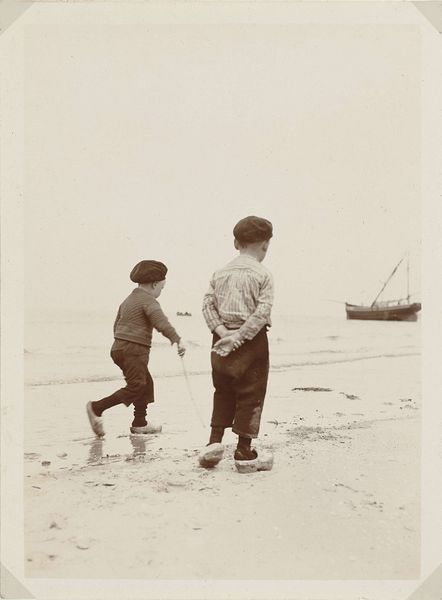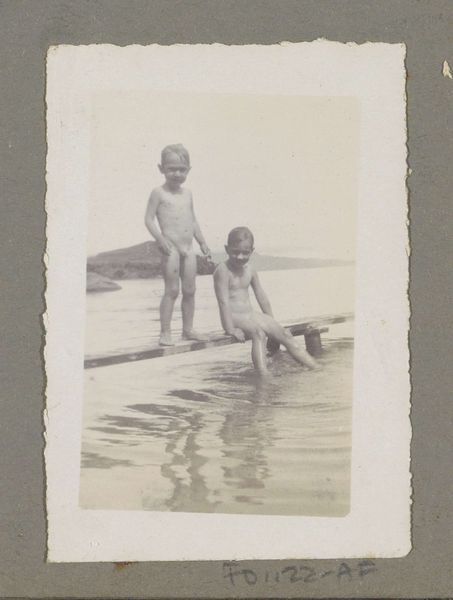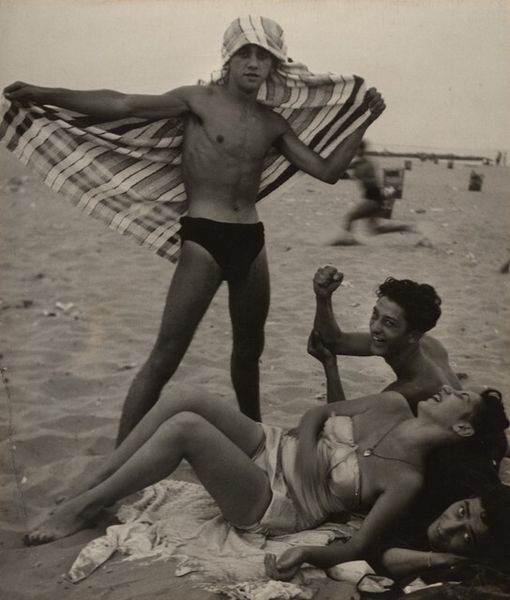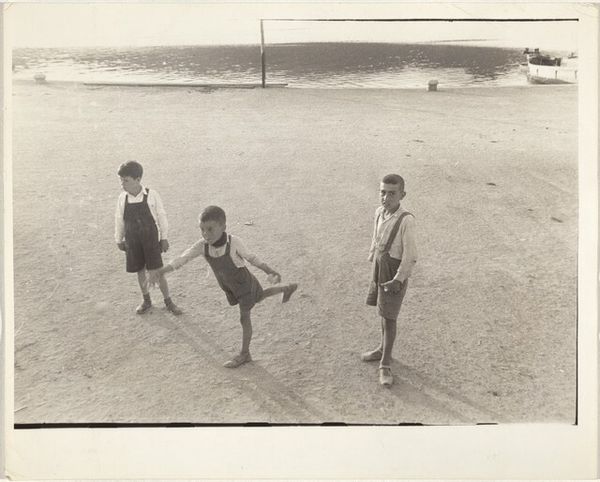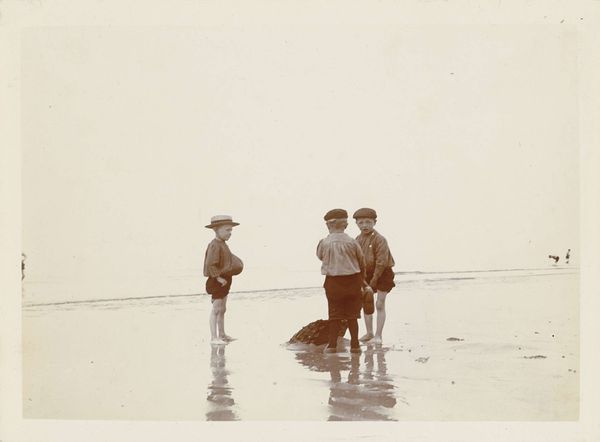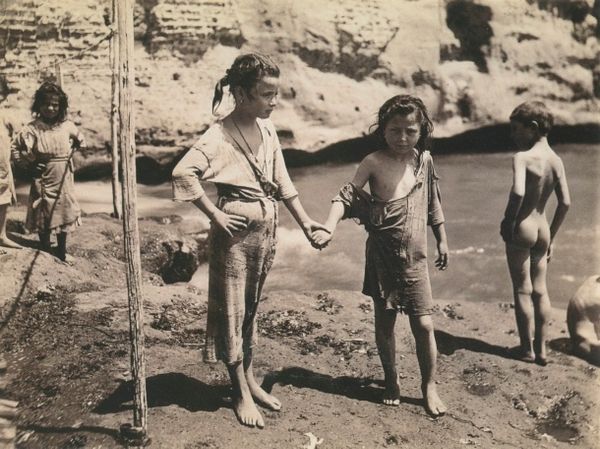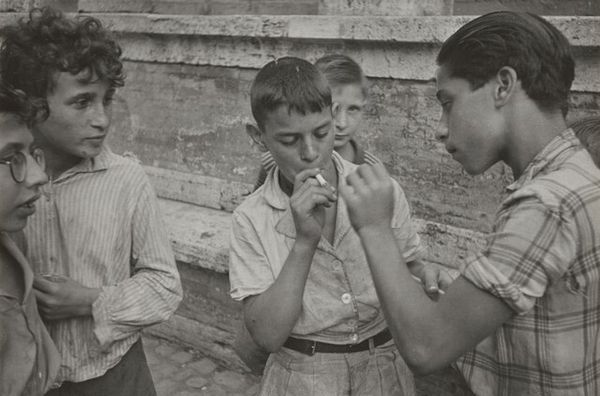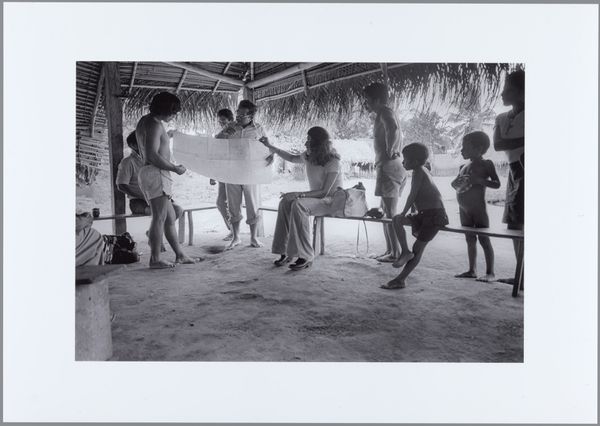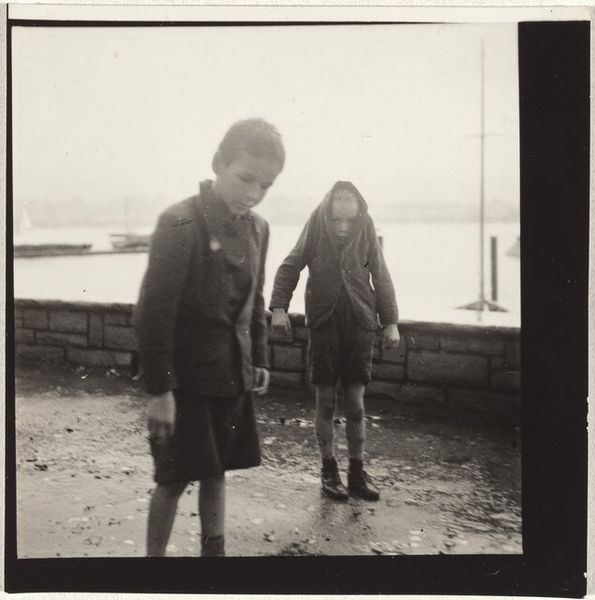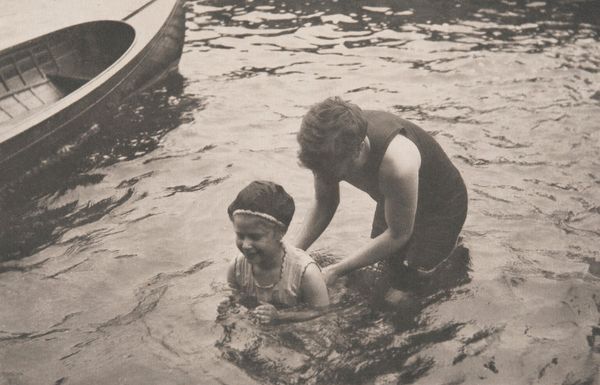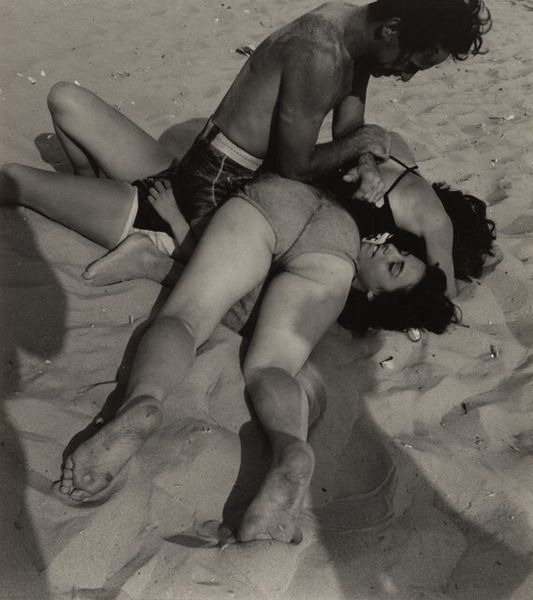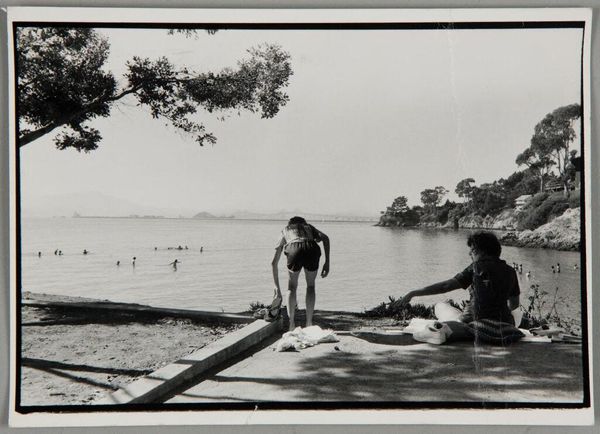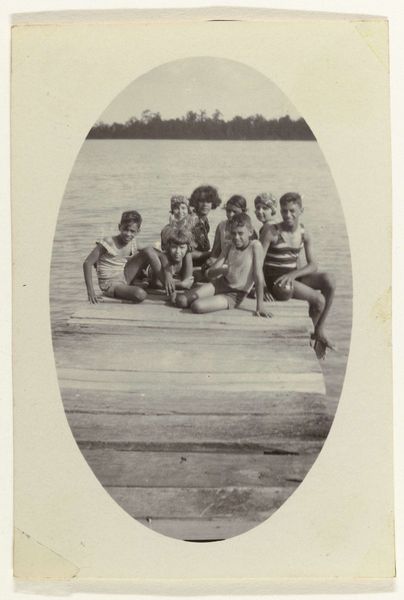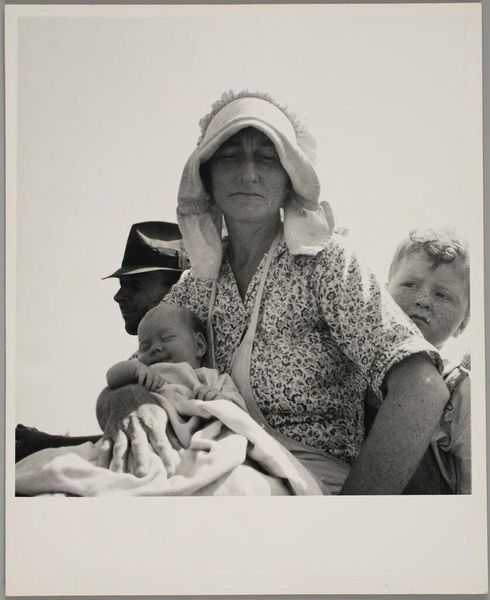
photography, gelatin-silver-print
#
portrait
#
african-art
#
outdoor photograph
#
outdoor photo
#
sport photography
#
outdoor photography
#
photography
#
gelatin-silver-print
#
genre-painting
#
realism
Dimensions: height 24 cm, width 18 cm
Copyright: Rijks Museum: Open Domain
Curator: Here we have E. de Vries’ gelatin silver print, "Ambonese Jongetjes," likely taken sometime between 1951 and 1955. What are your initial thoughts? Editor: It strikes me as a deeply intimate portrayal of childhood. The grainy texture and stark contrast give it a raw, almost documentary feel. There's a vulnerability there, balanced by the resilience of the two young boys. Curator: The realism in de Vries’ work often draws attention to the socio-economic realities of his subjects. This photograph prompts a dialogue on cultural representation, especially given the historical context of Dutch colonialism. Editor: Precisely. The composition itself seems deliberately unfussy, avoiding romanticization. The focus is squarely on the children, their interactions, and the simple act of examining a fish. This focus highlights how labour is perceived through imagery, subtly questioning who does and doesn't benefit. Curator: And let's consider the materiality. The choice of a gelatin silver print speaks to a specific photographic tradition, prioritizing detail and tonal range. In an age before mass digital photography, such prints held a particular value as documents of record, shaping our perception of events. It's not just about what's depicted but how that depiction was crafted, and how it might’ve circulated. Editor: That's key. The image was probably shown and sold to a mostly European audience at the time, adding another layer to how we consider these young boys’ lives in relation to art market demands and power dynamics inherent in colonial relationships. The image makes us question who exactly benefits from such pictures. Curator: Agreed. Thinking about the consumption of this image now, alongside its creation and distribution, it forces us to examine how our institutions present history and how this photo reflects historical narratives surrounding Dutch presence in the Moluccas. Editor: It serves as a potent reminder of the intertwined relationship between art, history, and the often-uncomfortable legacy of colonialism. Curator: It certainly does. Viewing this through both lenses, we gain a much richer understanding of its complexities.
Comments
No comments
Be the first to comment and join the conversation on the ultimate creative platform.
